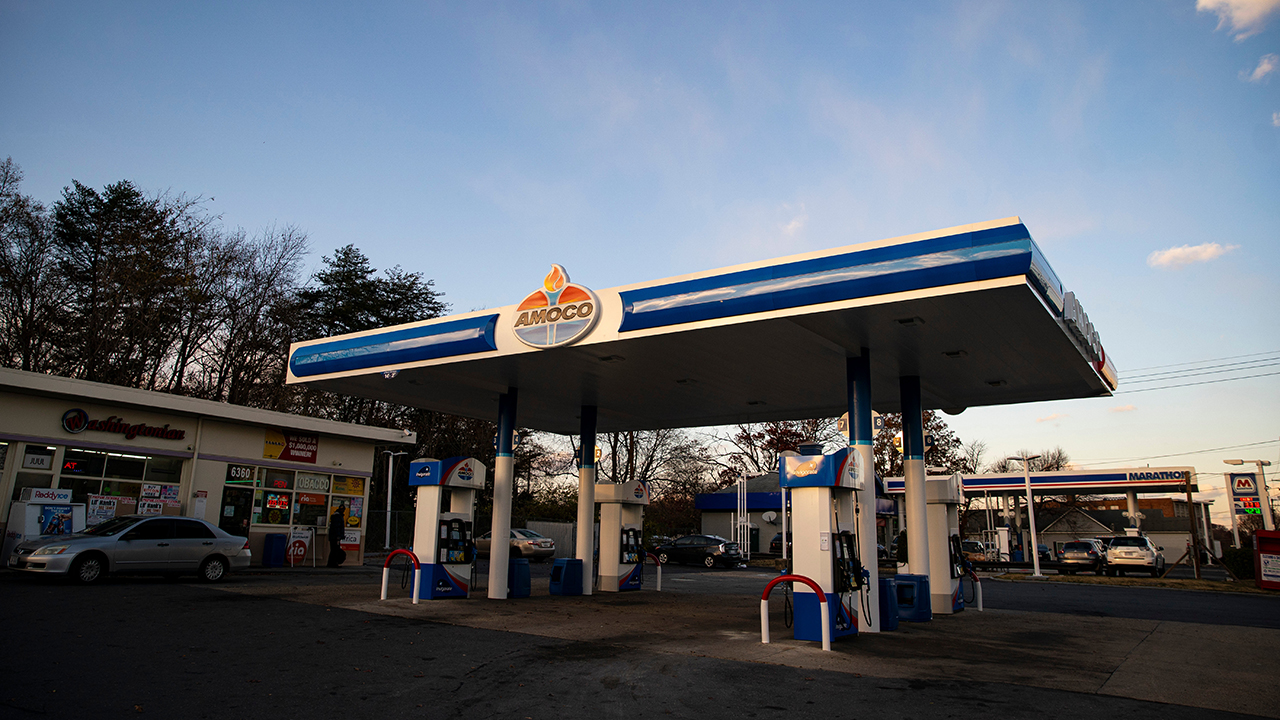Gas prices set to tumble 10% ahead of the Fourth of July
Gas prices are predicted to fall 10% this summer
Cooling inflation could create a 'goldilocks vibe' in asset markets: Darius Dale
42 Macro founder and CEO Darius Dale discusses whether Fed rate cuts will impact the resilient U.S. economy on 'Mornings with Maria.'
Gasoline prices tend to rise during the peak summer driving season, but Americans may be in luck this year.
Thanks to easing domestic demand and supply conditions, gas prices likely peaked in mid-April at a high of $3.67 per gallon — and are expected to continue falling in coming weeks, according to a new analysis published by RSM chief economist Joe Brusuelas.
"Given a look at wholesale gasoline prices, there is room for domestic gasoline prices to decline another 10% from the current $3.44 per gallon," he wrote. "This will surely bolster U.S. household balance sheets heading into the summer spending season."
The average cost of a gallon of regular gas was $3.44 on Wednesday, according to AAA, down about 4% from one month ago. Prices are expected to fall further as a result of lackluster demand as consumers pull back on spending in the face of ongoing inflation and burgeoning supply.
RENT PRICES ARE STAGNATING, SUGGESTING HIGH INFLATION MAY STICK AROUND
An Amoco gas station in Washington, D.C., on Nov. 28, 2023. (Al Drago/Bloomberg via Getty Images / Getty Images)
"Gasoline demand has trailed 2023 for most of this year, and analysts believe economic uncertainty may suppress demand this summer," said AAA spokesperson Andrew Gross. "So, is the typical robust summer driving season a thing of the past? Or is gas demand just taking longer to pick up steam? We may not know until autumn."
Falling gas prices could provide a welcome reprieve to Americans who have been crushed by unrelenting price increases for more than three years.
While inflation has fallen considerably from a peak of 9.1% notched during June 2022, it remains above the Federal Reserve’s 2% goal. And when compared with January 2021, shortly before the inflation crisis began, prices are up nearly 20%.
High inflation has created severe financial pressures for most U.S. households, which are forced to pay more for everyday necessities like food and rent. Price hikes are particularly devastating for lower-income Americans, because they tend to spend more of their already-stretched paycheck on necessities and therefore have less flexibility to save money.
POWELL SAYS FED WON'T RUSH TO CUT INTEREST RATES UNTIL INFLATION IS CONQUERED
Consumers are also grappling with high interest rates, after the Fed raised rates sharply in 2022 and 2023 to the highest level in two decades in a bid to slow the economy and cool inflation. Policymakers are now grappling with when they should take their foot off the brake.
Traffic on the 405 freeway in Los Angeles on April 2. (Eric Thayer/Bloomberg via Getty Images / Getty Images)
Brusuelas said that falling gas prices could lead to lower inflation readings, which in turn could support the argument for rate reductions later this year.
"Perhaps more importantly, falling gasoline prices will impact inflation aggregates that the Federal Reserve utilizes to formulate policy," Brusuelas wrote. "Falling gasoline prices damps topline inflation and that will support the case for rate cuts this fall."
The U.S. produces about 13.2 million barrels of oil per day, just below the record of 13.3 million recorded in December 2023, according to Brusuelas. Although the coalition of oil-producing nations known as OPEC+ has attempted to curb supply by trimming production, new supply is still finding its way to the market thanks to non-OPEC producers including the U.S., Canada, Norway and Brazil.
GET FOX BUSINESS ON THE GO BY CLICKING HERE
"In our estimation, the risk is that there is more supply to market on the way, and that implies lower oil and gasoline prices heading into the end of the year," he said.


